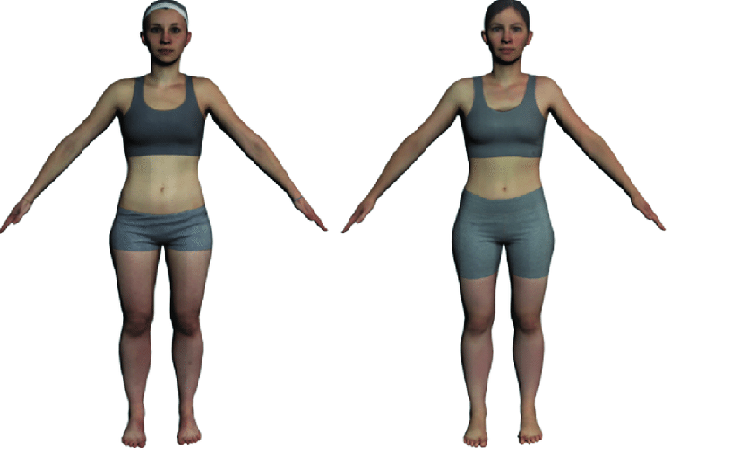Fleshy Tissue During Period
Menstruation is associated with a larger joint or organ. They are released from the uterus during menstruation when the lining of the uterus or endometrium is torn from the uterus through the uterus.
Fleshy Tissue During Period: The body normally produces platelets or platelets, allowing endometrial fluid and blood stagnation to pass through the placenta and out of the body but sometimes the body cannot produce enough waste, resulting in a blood clot.
This smooth menstrual cycle looks like a piece of crushed red fruit. They can be bright red or brown and vary in size. They are usually accompanied by blood clots. The longer the blood stays in the uterus , the darker the color and the more likely it is to swell.
Fleshy Tissue During Period
Fleshy Tissue During Period:- They secrete proteins that initiate blood clotting. Fibrin proteins are the final step in this cascade, linking to each other in a web-like structure that leads to clot formation.
Platelets can remove this clot. This occurs during menstruation and can damage the walls of blood vessels.
Urinary tract infections and heavy periods.
A normal menstrual cycle lasts 25 to 32 days. Normal drainage lasts four to seven days, and blood clots may occur. Generally, regular periods should cause mild to moderate discomfort from day one.
Every hour was considered significant if the pad or tampon was immersed for several hours or more than seven days Large lumps of menstrual blood are also considered signs of heavy periods. Excessive urination can also cause constant pain in the lower abdomen.
Menstrual bleeding can adversely affect a woman’s quality of life and can lead to other conditions such as peripheral arthritis, in which blood cell failure does not have enough healthy blood cells to provide oxygen to various organs and tissues Anemia can cause weakness and fatigue.
Urinary tract infections: 7 causes and what to do.
Blood or tissue contractions during menstruation can be normal and a woman’s hormonal imbalance can cause thickening of the uterine wall. This can lead to extensive bleeding and abscesses ranging from 5 mm to 3-4 cm.
But while foamy urine is normal in most cases and doesn’t require treatment, it can be a symptom of conditions like arthritis , endometriosis or fibromyalgia so it’s important to consult a doctor to assess the cause of blood clots and advise on the best treatment . They may order additional blood tests to evaluate blood clots or ultrasound.
This can happen if you have foam or meat for more than two seasons in a row;
- Abortion
Bleeding during menstruation can be a sign of miscarriage in the first trimester, especially if the lump is slightly yellowish or dark in color Somatic tissue bypass is also common.
What to do: Seeing a doctor is very important to find out if you have a miscarriage. If bleeding occurs, seek medical attention immediately and begin proper treatment to avoid excessive bleeding. Abortion usually occurs in the first week of pregnancy and bleeding lasts only 2-3 days.
- Pregnancy Cervical cancer
Endometriosis occurs when endometrial cells grow outside the uterus, which can lead to longer periods, severe pain and blood clots. Although the problem is more common in women in their 30s and 40s, it can occur at any age.
What to do : See a doctor for diagnosis (such as a vaginal ultrasound or blood test) . Treatment usually begins depending on a woman’s desire to conceive and may include medications, hormones, or surgery.
3. Myomas described
Myomas are benign tumors in the lining of the uterus, also known as uterine fibroids. Symptoms often include uterine pain, weight loss or weight loss, with longer duration and bleeding between periods.
What to do: It’s important to see your doctor, who can order a pelvic exam and rule out a myoma. Treatment may include medications, liposuction surgery, or radiation.
4. Iron deficiency anemia
can be a cause of light menstruation , as iron deficiency weakens blood coagulation and causes menstrual cramps.
What to do: Contact your doctor to request a blood test to rule out anemia . If diagnosed with arthritis , it can be treated with prescribed iron supplements, as well as supplementing with healthy foods like lentils, parsley, beans and corn.
5. Other diseases affecting the gastrointestinal tract
Other endometrial diseases such as having an excessive amount of endometrial fluid, or endometrial polyps, which are the formation of polyps in the ovaries, can cause menstrual whitening due to the size of the uterus
What to do : See a gynecologist to identify the problem as soon as possible. It can be treated with endometriosis or progesterone.
6. Vitamin and mineral deficiencies.
A lack of vitamins and minerals that regulate blood clotting ( such as a lack of vitamin C or K) can weaken the body’s ability to clot, causing blood clots during your period
What to do: In this case, add some food like spinach, eggplant, onions, broccoli, or carrots.
7. Gynecology or obstetric examinations
can also be due to vaginal examination or problems during labor
What to do: Periods can change in about 2 or 3 days, then disappear and become completely normal in the next cycle. So if the rash persists, it ’s important to see your gynecologist .
When your period comes with fleshy tissue
Small mice may be associated with your menstrual cycle, which does not necessarily mean that the woman has miscarried. This organ is a small part of a woman’s abdomen, but it has no color . Just as blood contains red blood cells and white blood cells, stomach ulcers can also have this scar.
Fleshy lumps have appeared 2 times in a row during your period, see your gynecologist for evaluation and ask if testing is needed .







